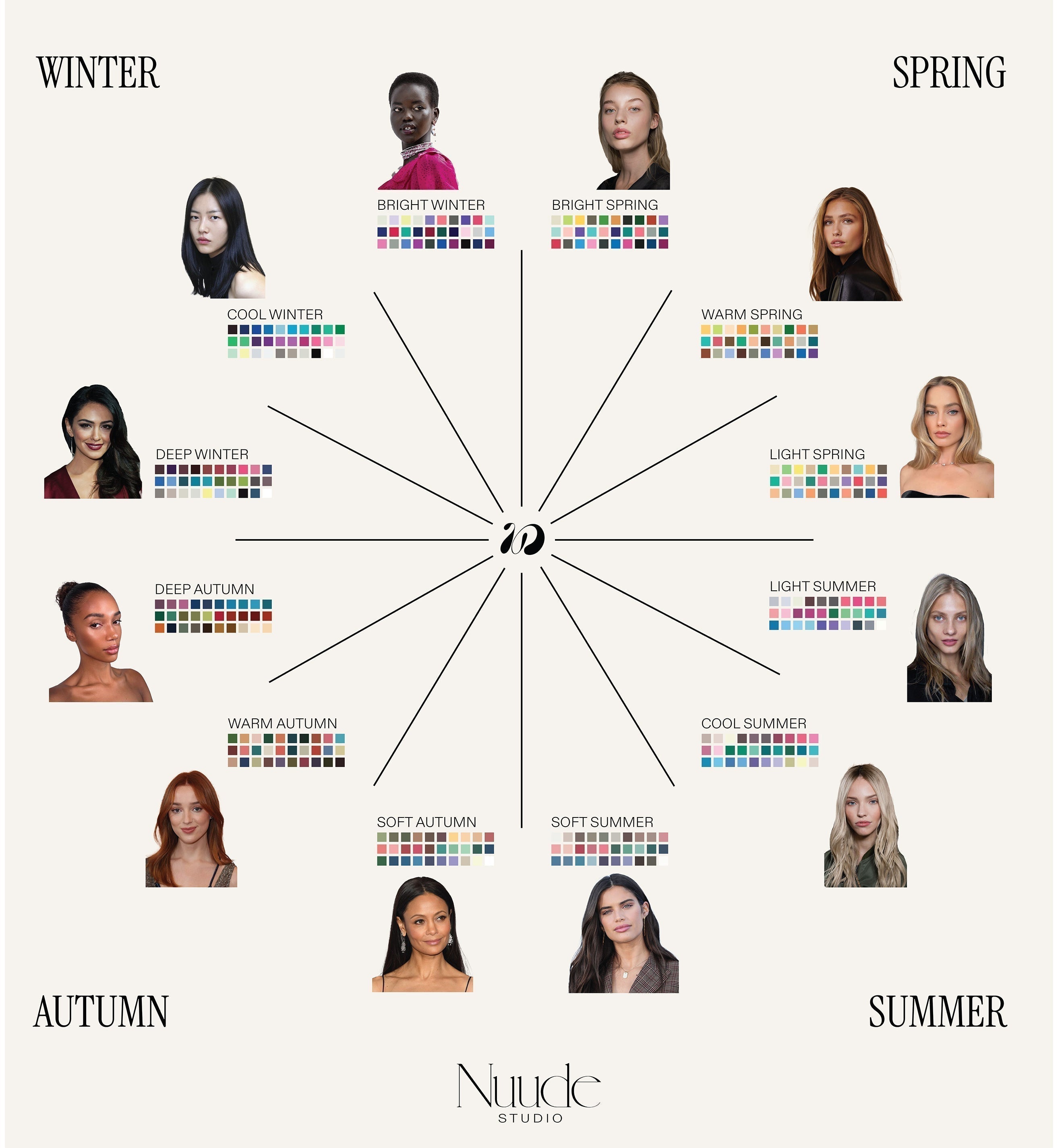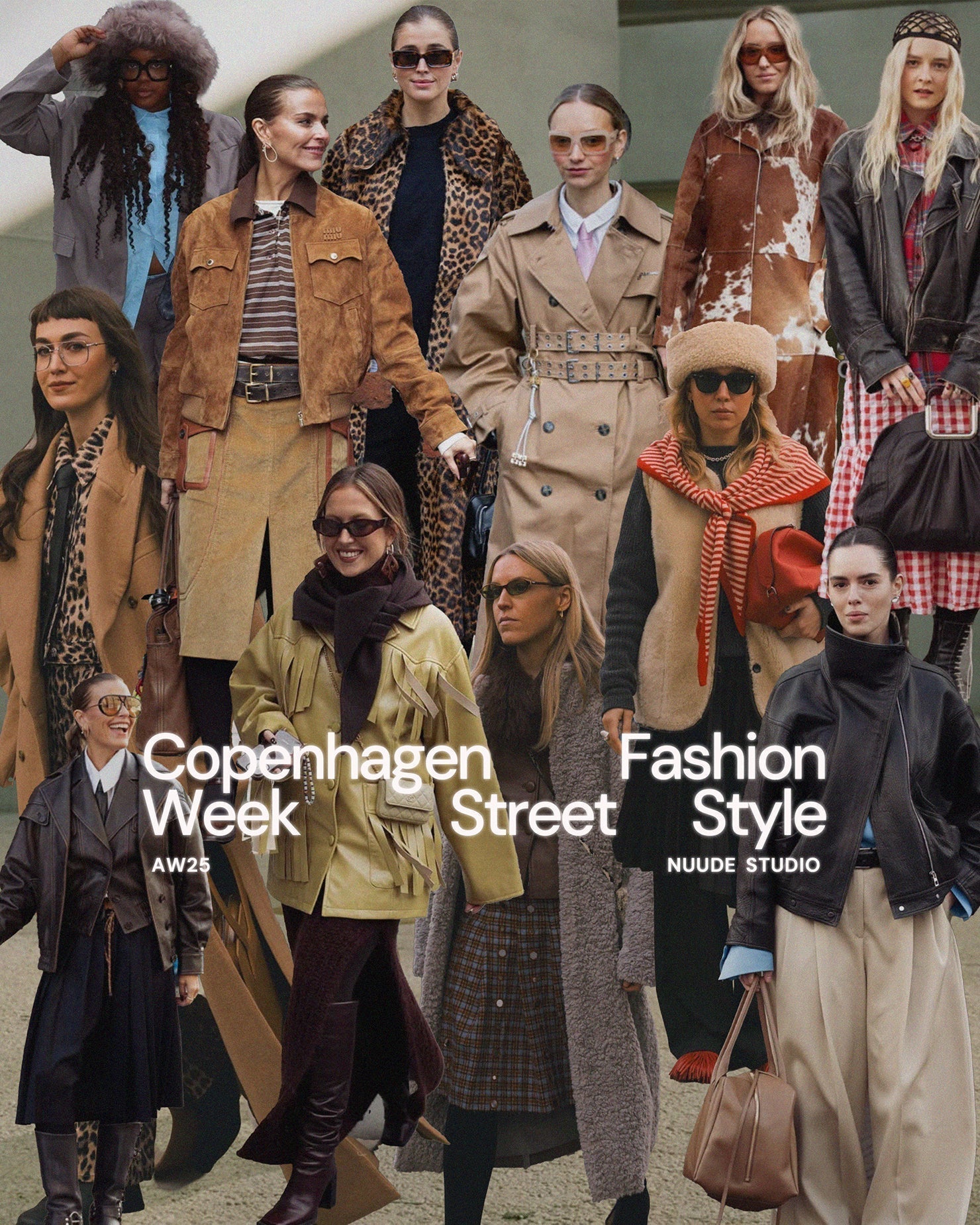Find your seasonal Colour Palette

Let’s be honest, finding colours that make you look effortlessly beautiful can feel like a secret code only a select few have cracked. But that’s exactly where seasonal colour analysis comes in, helping you uncover the shades that don’t just look good in theory, but bring your natural beauty to life.
Why is matters...
Imagine a wardrobe filled only with colours that feel tailored to you - shades that flatter your skin tone, make your eyes sparkle, and elevate every outfit with ease.
Step 1: Start with Your Undertone
Your skin undertone is the foundation of your colour palette. Warm undertones have a subtle yellow or golden cast, while cool undertones lean more towards pink or blue. Neutral undertones fall somewhere in between, with a balanced mix of warm and cool.
Try this test: Look at your veins in natural light. If they appear greenish, you’re likely warm-toned. If they look blue, you’re probably cool-toned. Neutral undertones may see a mix of both.
Visual below: Compare your skin tone to identify where you land—warm, cool, or neutral.

Step 2: Take Note of Your Hair Colour
Hair undertones can shift how certain colours look on you, adding dimension to your palette. Warm hair tones often include golden blonde, strawberry blonde, or rich auburn shades. Cool tones lean towards ashy blondes, jet blacks, or icy browns, while neutral hair tones sit somewhere in between, balancing warm and cool.
Tip: Hold up a gold and a silver accessory near your face. If gold complements your hair better, you’re likely warm; if silver pops, you’re cool.
Visual below: See examples of warm, cool, and neutral hair tones to help pinpoint yours.

Step 3: Analyse Your Eye Colour
Just like skin and hair, eyes also have unique undertones that can offer additional clues. Warm eyes, with yellow undertones, appear brighter and are often seen in turquoise blues, mossy greens, and ochre browns. These eyes will glow when paired with something gold, drawing out those yellow undertones.
Cool eyes, however, carry a blue undertone. They may appear greyish or softer, and colours like silver will make them pop. Eyes that fall somewhere between are considered neutral, a blend of the two.
Visual below: Compare your eye colour undertones with the examples below to see if you’re warm, cool, or neutral.

Step 4: Understanding Contrast Levels
Contrast in fashion refers to the difference in lightness or darkness between colours. It’s a measure of how far apart colours are on a scale of shades. For instance, black and white exhibit high contrast, as they sit at opposite ends of the spectrum, while two shades of medium grey show low contrast due to their close proximity on the scale.
Understanding your contrast level is essential, as it helps you select colours that enhance your natural beauty. To determine your contrast level, evaluate the differences between your skin tone, hair colour, and eye colour.
-
High Contrast: If you have a significant difference between your skin and hair colour—such as fair skin paired with dark hair or deep skin tones with light hair—you likely fall into the high-contrast category. This means you can pull off bold, vibrant colours and striking combinations. Think jewel tones or a classic black-and-white ensemble that highlights your dramatic contrasts.
-
Medium Contrast: If your features are more balanced, with subtle variations in shade—like light brown hair paired with medium skin—you’re in the medium contrast range. This allows for a versatile palette that includes both soft and slightly bolder colours. You can experiment with combinations that have some contrast without overwhelming your natural tones.
-
Low Contrast: Those with similar tones across skin, hair, and eyes—like light blonde hair, fair skin, and light blue eyes—typically have low contrast. Soft, muted shades, pastels, and monochromatic outfits work beautifully here, creating a harmonious and elegant look.
Visual below: Compare examples of high, medium, and low contrast to find where you fit. Understanding your contrast level enables you to create outfits that not only reflect your personal style but also complement and enhance your natural features, leading to a more polished and confident appearance.

Putting It All Together: Discovering Your Season
With each component identified, you’re ready to match your features to one of the four seasonal palettes:
-
Spring: Light and warm - think peachy shades, soft greens, and golden hues that reflect sunlight.
-
Summer: Cool and soft - pastels, soft blues, and greyish tones that evoke breezy, light summers.
-
Autumn: Warm and rich - earthy tones like burnt orange, mustard, and olive to mirror the warmth of autumn.
-
Winter: Cool and bold - deep jewel tones like emerald, sapphire, and ruby red for a dramatic, crisp effect.




